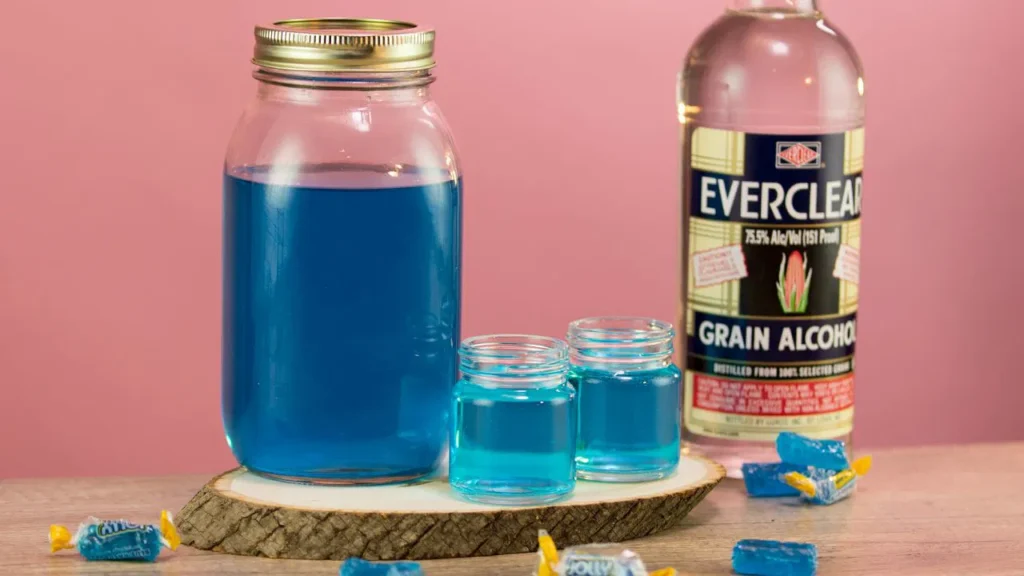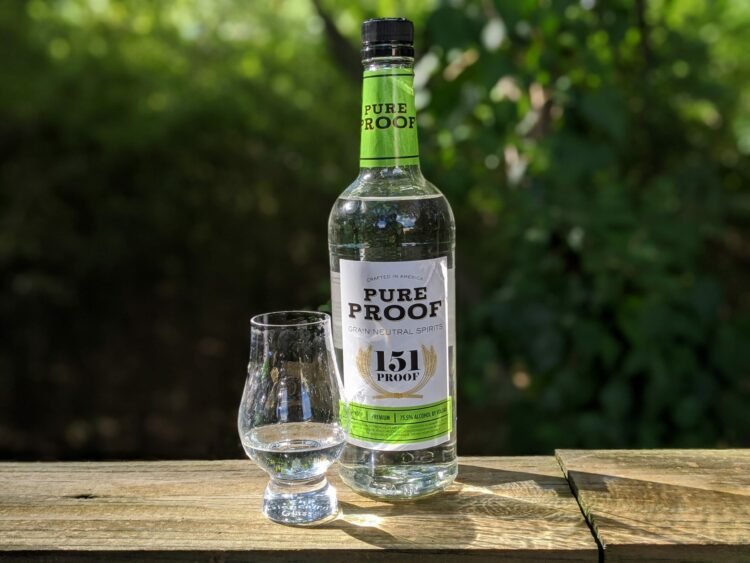Grain spirits, often referred to as distilled spirits or hard liquors, are alcoholic beverages made primarily from grains. These spirits are the product of fermentation and distillation processes that transform the sugars in the grains into alcohol. Popular examples of grain spirits include vodka, gin, whiskey, and rum. While grain spirits are enjoyed worldwide in various forms, each type has a unique production technique and flavor profile that distinguishes it from the others.
In this article, we will explore what grain spirits are, the different types available, the production processes behind them, and the growing appeal of grain spirits across cultures. Whether you are a seasoned enthusiast or a curious newcomer, this guide will provide insight into why you should consider trying different grain spirits.
Defining Grain Spirits
Grain spirits are distilled alcohols made from fermented grains. These grains can include barley, corn, rye, wheat, and even oats. The process of making grain spirits involves the fermentation of starches found in grains, which are then converted into alcohol through the addition of yeast. After fermentation, the liquid undergoes distillation, a process that involves heating the liquid to separate the alcohol from the other components. The result is a high-proof alcohol that forms the base for various spirits like vodka, gin, whiskey, and rum.
The defining characteristic of grain spirits is that they are produced primarily from grain-based ingredients. While other spirits, such as fruit-based brandy or agave-based tequila, exist, grain spirits are often considered the most widely consumed category of distilled alcohol worldwide.
Types of Grain Spirits
Grain spirits come in various forms, each with its own unique flavor profile and production technique. The most well-known types include vodka, gin, whiskey, and rum. Let’s take a deeper dive into each type and how they are made.
1. Vodka: The Neutral Grain Spirit
Vodka is perhaps the most famous and widely consumed grain spirit globally. Known for its neutral taste and smooth texture, vodka is traditionally made from grains like wheat, rye, and corn, although it can also be produced from potatoes, grapes, or even soybeans. The defining characteristic of vodka is its minimal flavor profile, making it an ideal base for cocktails or enjoyed on its own.
The production of vodka involves a multi-step process that includes mashing the grains, fermenting the mixture, distilling it at a high proof, and then filtering it several times to remove impurities. The result is a clean, clear, and relatively flavorless spirit that can be enjoyed in various ways. The high proof of vodka can also be diluted to create a lower alcohol content, further enhancing its versatility.
2. Gin: The Herb-Infused Grain Spirit
Gin is another popular grain spirit, distinct from vodka due to its infusion with botanicals—most notably juniper berries. Gin is traditionally made from a neutral grain spirit, similar to vodka, and then flavored with various herbs and spices during the distillation process. The botanicals used in gin can vary widely, including ingredients like coriander, angelica root, citrus peel, and even exotic herbs and flowers.
The production of gin starts with a base spirit made from grains, which is then distilled with the botanicals. The type and quality of botanicals used can significantly affect the final flavor profile, leading to a range of different gin styles, from London Dry Gin to Old Tom Gin to contemporary craft gin. The combination of grain-based alcohol and botanicals gives gin its unique, aromatic, and sometimes floral character.
3. Whiskey: The Barrel-Aged Grain Spirit
Whiskey (or whisky, depending on the region) is a spirit with a rich history and distinct flavor profile that sets it apart from other grain spirits. Made from grains such as barley, corn, rye, and wheat, whiskey undergoes a complex production process that includes fermentation, distillation, and aging. The aging process in oak barrels is a key component of whiskey’s development, as it imparts unique flavors and characteristics to the spirit.
There are several types of whiskey, each defined by the grains used and the production methods involved. For example, Scotch whisky is primarily made from malted barley and aged in oak barrels for a minimum of three years, while bourbon is made from at least 51% corn and is aged in new charred oak barrels. Rye whiskey, which features a spicier flavor profile, is made with a higher percentage of rye in the grain mash. The aging process, along with the type of barrel used, greatly influences the flavor profile of the whiskey, contributing notes of vanilla, caramel, oak, and smoke.
4. Rum: The Sweet Side of Grain Spirits
While rum is typically made from sugarcane or molasses, it is occasionally made from grain as well, especially in regions where sugarcane production is not as prominent. Grain-based rums are usually lighter in flavor than their molasses-based counterparts and can have a clean, sweet taste. Grain rums may be found in certain craft distilleries, though they are less common than traditional sugarcane-based rums.
The production of rum involves fermenting the sugars in the base ingredients, followed by distillation. Rum is typically aged in wooden barrels, which imparts additional flavors and colors to the spirit. While rum can be enjoyed neat or on the rocks, it is also a popular ingredient in cocktails, such as the mojito or piña colada.
The Production Process of Grain Spirits
Each type of grain spirit is made through a similar foundational process, but the methods can differ significantly, giving each spirit its unique characteristics. Understanding these production techniques can shed light on how the spirit’s flavor, texture, and complexity develop.
1. Fermentation: The First Step in Creating Alcohol
The first step in the production of grain spirits is fermentation. During fermentation, the starches in the grains are converted into fermentable sugars. Yeast is then added to the mixture, which ferments the sugars into alcohol. The fermentation process is critical to the final flavor profile of the spirit, as different types of yeast and grain combinations can affect the taste.
2. Distillation: Separating Alcohol from Impurities
After fermentation, the liquid is distilled to separate the alcohol from the water, proteins, and other impurities. Distillation is a key step in producing the high-proof alcohol that forms the base of grain spirits. The process involves heating the liquid to the point where the alcohol vaporizes and then collecting and condensing the vapor. The distillation process is typically repeated to increase the purity and alcohol content of the final product.
3. Aging (For Some Grain Spirits)
Aging is a crucial step for certain grain spirits, particularly whiskey. The aging process takes place in wooden barrels, typically oak, which imparts distinctive flavors and characteristics to the spirit. The climate, type of wood used, and length of aging all play a role in determining the flavor profile of the aged spirit. For example, a whiskey aged for several years in a charred oak barrel may develop rich notes of vanilla, caramel, and spice.
4. Botanical Infusions (For Gin)
Gin, unlike other grain spirits, undergoes a special infusion process where botanicals are added to the distilled alcohol. These botanicals, including juniper berries, coriander, and other spices, are often placed in a basket within the still so that the vapor passes through them during distillation. This process allows the botanicals to infuse their aromas and flavors into the spirit, giving gin its characteristic taste.

The Appeal of Grain Spirits Across Cultures
Grain spirits have become ingrained in various cultures worldwide, and each culture has its unique approach to making and enjoying these spirits. The versatility of grain spirits allows them to be adapted to different tastes and preferences, leading to their widespread popularity.
1. Vodka: A Universal Favorite
Vodka is particularly beloved in Eastern Europe and Russia, where it has been an integral part of cultural traditions for centuries. In these regions, vodka is enjoyed in social settings, often accompanied by toasts and celebrations. Its neutral flavor makes it a versatile drink, suitable for a wide range of cocktails and mixers. Additionally, vodka’s ability to be flavored with different infusions has made it popular in countries around the world, from the U.S. to China.
2. Gin: A Staple of British and American Drinking Culture
Gin has a long history in both the United Kingdom and the United States, where it has evolved into an essential ingredient in cocktails such as the gin and tonic, the martini, and the Negroni. In the UK, gin has become a symbol of sophistication, with craft distilleries producing a wide range of gins infused with unique botanicals. In the U.S., gin has enjoyed a resurgence in recent years, with craft distillers experimenting with new styles and flavors.
3. Whiskey: A Drink of Distinction
Whiskey is enjoyed worldwide, with particularly strong traditions in countries like Scotland, Ireland, the United States, and Canada. Each region has its own style of whiskey, from Scotch whisky to bourbon to Canadian rye whiskey. The diversity of whiskey types and the rich history of whiskey production make it a fascinating spirit to explore. Whether sipped neat, on the rocks, or mixed into a cocktail, whiskey offers an impressive range of flavors to suit different tastes.
4. Rum: A Global Favorite in the Caribbean and Beyond
Rum, especially molasses-based rum, has deep ties to the Caribbean, where it is produced in large quantities. In these regions, rum is a source of cultural pride and is often enjoyed neat, mixed with tropical juices, or used in classic cocktails such as the daiquiri and the mojito. Rum has also gained international popularity, with many countries producing their own unique expressions.
Why Should You Try Grain Spirits?
There are several compelling reasons why you should consider trying different types of grain spirits:
- Versatility: Grain spirits, especially vodka, gin, and whiskey, are incredibly versatile. They can be enjoyed neat, on the rocks, or in a wide range of cocktails, making them suitable for various occasions.
- Rich Flavors: Grain spirits offer a broad spectrum of flavors, from the neutral taste of vodka to the herbal complexity of gin and the rich, smoky notes of whiskey. There’s a spirit to suit every palate.
- Cultural Significance: Many grain spirits hold deep cultural and historical significance, and trying them allows you to connect with the traditions of different regions.
- Craft Distilling: As the craft distilling movement continues to grow, more exciting, innovative, and experimental grain spirits are being created, giving consumers even more reasons to explore the world of distilled alcohol.
Conclusion
Grain spirits have a rich and diverse history, with various types offering unique production methods and flavor profiles. From the neutral smoothness of vodka to the complex botanicals in gin and the barrel-aged depth of whiskey, each type of grain spirit presents an opportunity to explore the art of distillation. Whether you’re a casual enthusiast or a seasoned connoisseur, there’s a grain spirit out there for everyone.































